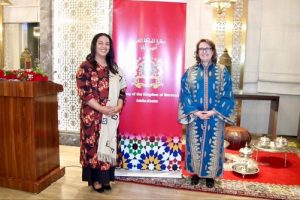All the best-educated generals and the most renowned intellectuals in Ethiopia thickly surrounded him and pleaded with him to become the next prime minister of the country, but Dr. Ashenafi Daba would not budge unless his preconditions for doing so were strictly met.
“I believe I have made myself quite clear on this issue. It is no use just changing the prime minister. The whole leadership must go and the whole system must be dismantled. The entire hodgepodge policy package must be unpacked. No single leader can function satisfactorily in a system that is almost wholly dysfunctional. I may be able to work with you, but unfortunately you barely make up a fifth of the leadership,” said Dr. Ashenafi Daba.
“Well, Dr. Ashenafi, you can apply the incremental gradualist development strategy approach and we will all be working on your side,” said the Sandhurst- trained General Gobena Taddesse.
“The incremental gradualist approach works only when the basic development trajectory is right. Our problem is that the direction of change is not one of growth and development but of deterioration and regression,” said Dr. Ashenafi.
“In what sense?” asked General Gobena.
“I won’t comment on the political situation although that may well be the root cause of everything that has been happening in this country. What I am worried more about is the economy, which is clearly going downhill. How can you print and create money (broad money to be precise) by nearly 30,000 percent on a real GDP growth of less than population growth? How could anybody speak of economic growth when nearly 60 percent of the working–age urban population is technically unemployed? How can you put up high–rise buildings where agro–industries, other industries and commercial farms should be located? Do you know why urbanization in Ethiopia is so low at only about 20 percent? That is because of an extremely low level of industrialization, and because of that the rapidly growing rural population cannot make way for the expansion of large –scale commercial farming by moving too fast-industrializing urban and sub –urban areas, where it would have been absorbed in good -quality industrial and service –sector employment. What we have witnessed instead is a burgeoning rural population vis a vis a serious land shortage and a growing level of disguised unemployment in rural parts of the country and a frightening level of open (overt) unemployment in cities and towns like Addis Ababa, Awasa and Adama (Nazareth).
The very broad growth model is obvious enough: agro –commercialize and industrialize and give everybody a chance to survive and live. The alternative is economic stagnation in the face of relentless population growth, which unleashes an antagonistic struggle for survival among population groups and individuals,” Dr. Ashenafi tried expatiate on a basic development strategy he has propounded ever since he received his doctorate from the US University of California at Berkley.
General Gobena Taddesse who was attentively listening did not find it difficult to grasp the essence of Dr. Ashenafi’s macro development model, but he wondered who was going to do the agro –commercializing and the industrialization. So, he asked Dr. Ashenafie thus: “The general growth model is quite clear, but surely, the peasants are not suddenly going to turn themselves into modern commercial farmers with tractors and combine harvesters, nor the urban unemployed into up and running modern industrialists. How is the transition effected?
“That is an excellent question, General Gobena! What I have tried to outline are only the very bare essentials of a very broad growth and development model. We should develop a dynamic growth process out of this rather abstract model by identifying and specifying the various actors, policies and institutions necessary to set the whole process in motion. For example, consider the following sequence of events:
- Give peasant farmers title deeds to their plots of land, including the right to sell and exchange the plots; b) Assume the buyers of the land plots consolidate them into medium and large- scale commercial farms; c) Also assume that the peasants who sell their land plots migrate to sub-urban and urban areas where they can find agro-industrial and industrial employment. That is the kind of development direction I call the right trajectory,” Dr. Ashenafi said.
“But who are going to be the commercial farmers and the industrialists?” asked the Sandhurst –trained General Gobena.
“Another excellent question, General Gobena! In my growth model, government is considered to be a factor of production like land, labour, capital, enterprise and research and development. The first thing the government has to do is just create what they call an enabling economic environment. In our example, just granting title deeds to the peasants would be a first enabling policy measure. Secondly, the government should establish a fast–track center for entrepreneurship, where would–be commercial farmers, agro- industrialists and other industrialists could be given special training by professionals, including from the US and EU,” Dr. Ashenafi tried to amplify his earlier assertions.
General Gobena’s Sandhurst-trained brain quickly re-arranged all the elements of Dr. Ashenafi’s growth model it has imbibed from the doctor’s earlier discussions and the General started to give an elucidation of his own as follows: “Dr. Ashenafi, I would like to extend special thanks to you for teaching me what I would call the basic principles and facts of development economics. I now am in a position to appreciate the importance of your recommendations on a) the preparation of a country–wide land use plan; b) the setting up of a ministry of land reform and administration; c) the re-training of the Ethiopian youth at a fast–track center for entrepreneurship; d) overhauling the state banking system including the National Bank of Ethiopia (NBE); e) establishment of a project study and analysis institute; f) implementing on a fast –track basis the new national (country –wide) education and training policy and above all g) changing the cast-in–stone land policy of the country.
Suddenly General Gobena’s behavior appeared to be disconcerted and it soon became clear why he was losing his trade –mark aplomb. A sergeant barged into the room where the secret meeting was being held. “Stand up and put your hands up and don’t move!” shouted the sergeant who was brandishing a brand–new machine gun. The assembled intellectuals and high–ranking officers did as they were told. “Put your hands on your heads and file out,” the gun–toting soldier ordered. They all did as they were told. They had no choice; they were completely surrounded by heavily armed troops.
General Gobena Taddese, who had learned from the mistakes of a fellow Sandhurst graduate in the botched 1989 coup attempt in Addis Ababa, activated his counter–counter coup plan by word of mouth. The troops who were surrounding the assembled intellectuals and officers were now themselves surrounded by equally heavily armed troops in a wider circle.
“Don’t open fire! I am initiating a de – escalation process!” General Gobena ordered his troops although they had a shooting advantage. He then phoned his opponent on the other side of the aisle, so to speak, and said: “We have no intention of seizing power. Our two major demands are removing TPLF collaborationists from positions of power and influence and accepting and implementing Dr. Ashenafi’s economic growth and development model.” The general on the opposing side, general Balecha, said “I will communicate same to the Commander- in – Chief and respond posthaste.”
The Commander–in–Chief considered the communicated demands and ordered thus: “Dispatch list of removables immediately and tell Dr. Ashenafi to report at the Prime Minister’s Office. Defuse dangerous armed standoff and order troops on both sides back to barracks.” General Balecha communicated same to General Gobena who sent his supporters back to barracks as ordered by the Commander–in-Chief and then told Dr. Ashenafi “to go see the Prime Minister.”
The Prime Minister gave Dr. Ashenafi Daba a cordial welcome and uttered a few words in Oromigna (Oromiffa) which obviously pleased the distinguished son of an Oromo father. To the Prime Minister’s surprise, Dr. Ashenafi Daba said: “I know your English, is fluent; So, I”d rather speak in English as all the basic concepts behind my development model are better articulated in English. At any rate, it is better than to try to explain it in mongrel Amharic or Oromigna, what we call “ Frundus Amharic,” said Dr. Ashenafi who is, however, an Amhara on his beloved mother’s side. The Prime Minister flashed a hearty smile and Dr. Ashenafi continued to present verbally his famous and widely accepted economic development model as follows:
“Mr. Prime Minister, I must first admit that there has been a lot of hype and spin about my growth and development model. Actually, it is a simple common –sense approach. I don’t quite know whether I am being original in adding two more factors to the standard four factors of production. So, in my growth model, the six factors of production are land, labour, capital, enterprise, research & development and government. Over the last thirty years or so, the government has been the main culprit in Ethiopia’s economic backwardness. Land ownership is absurdly a government monopoly. Labour has been deliberately made a pathetically benighted human junk; capital has been proxied by uncontrolled currency printing and money creation; enterprise cannot thrive on a largely benighted general population; research & development is nominal and symbolic. So, if you remove TPLF collaborationists from positions of power and influence, land will be released from the shackles of government monopoly ownership; labour will be given quality education and training and enterprise will thrive; bank credit will be highly productive and the national currency will be rescued from deliberate debasement. As a result, peasant farm plots will be consolidated into medium-and large-scale commercial farms; surplus rural labour will migrate to urban and suburban areas where it will be absorbed in expanding agro-industrial and industrial employment.” In the evening, the Prime Minister, who is also Ethiopia’s Commander–in-Chief, appeared on Ethiopian TV and announced: “Thanks to General Gobena Taddesse, the little military mix-up today has been defused. General Gobena has been appointed Chief of Staff and Dr. Ashenafi Daba will henceforth be my economy minister.
Thank you and God bless Ethiopia!
The Ethiopian Herald July 19, 2020
BY TEKLEBIRHAN GEBREMICHAEL




